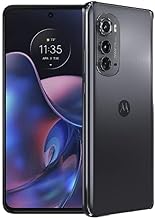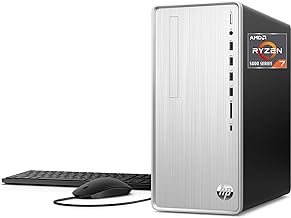5 important factors worth considering when looking for the best cable
In today’s world of advanced technology and constant connection, choosing the right cable may seem like a small decision, but it’s actually really important for making sure your devices work well. Whether it’s a charging cable or a data transfer cable, each one plays a big role in how well our gadgets work. When shopping for a cable, there are important things to think about beyond just the basics, like how long it will last, if it will work with your devices, how fast it will transfer data, and if it’s safe to use. All of these factors work together to make a big difference in how well your devices work and how long they last. So, choosing the right cable isn’t just about staying connected – it’s an important investment in keeping all your tech tools running smoothly.
See our guide to the best cable.
Cable type
When dealing with different types of cables, it’s important to consider how they affect your overall connection experience. Choosing between fiber optic, coaxial, or twisted pair cables is a crucial decision that impacts the reliability and efficiency of your connection. Fiber optic cables offer super-fast speeds and minimal signal loss, while coaxial cables are known for their durability and compatibility. Twisted pair cables are a budget-friendly option that still perform well.
Exploring the world of cable types reveals a variety of features that cater to different user needs. Fiber optic cables are best for high-speed data transmission, making them ideal for data centers and networks. Coaxial cables excel at providing strong TV signal transmission for households. Twisted pair cables are useful for small-scale connectivity needs. Each cable type has its own strengths, meeting various preferences in the tech world.
In today’s digital age, cables play a crucial role in keeping us connected. Whether it’s fiber optic, coaxial, or twisted pair, each type serves a specific purpose and helps shape our connectivity experiences.
Conductor material
When it comes to choosing the best material for your cables, copper is the top choice. It is known for its ability to conduct electricity well, making it ideal for things like household wiring and industrial setups. Copper has low resistance, meaning electrical signals can move through it efficiently with little loss and maximum performance. Even though other materials like aluminum are available, copper is still the best for providing reliable and consistent electrical conductivity.
While copper is usually the preferred option, it’s important to think about what your project needs before making a decision. Things like budget and the environment can affect which material is best for you. However, when it comes to performance and how long it lasts, copper is still the top choice. Choosing copper shows that you care about quality and reliability in your electrical work.
Insulation material
When buying cable, it’s important to consider the insulation material used. This material plays a big role in how well the cable performs and how long it lasts. Good insulation protects the cable from things like moisture, heat, and wear and tear. It also reduces the risk of electrical issues, keeping both equipment and people safe. Choosing cables with high-quality insulation ensures they work well and last a long time in different situations.
The insulation material used affects how well the cable can handle tough conditions and stay working well for a long time. Better insulation also helps signal transmission and overall performance of the cable. When picking out a cable, you should look for insulation materials that match what you need for the job. Choosing cables with good insulation technology helps prevent electrical problems and keeps the cable working well in different settings. Investing in top-notch insulation material is a smart choice that leads to reliability, safety, and good performance in the long run.
Length
When buying cables, the length is important. Getting the right length can make your setup easier or harder. Longer cables might seem flexible but can create a messy and tangled space. Short cables can strain connections and limit movement, affecting how well your devices work. Finding the right length is key for a smooth and user-friendly experience.
Think about what will work best for your setup when picking cable length. Don’t go too long or settle for something that doesn’t meet your needs. Choosing the right cable length can improve how organized your space is and make it more efficient. Even though cable length might not seem important, it can really impact how well your setup works and looks. Pick wisely, and your cables will fit into your space seamlessly, combining usefulness and style, making your experience better.
Price
When buying cable services, many people base their decision on price. They want to get the best value for their money, with so many options in the market. Some are willing to pay more for extra features or faster speeds, while others look for affordable packages. It’s important to find a balance between cost and quality to make sure you are getting the most out of your purchase. By comparing different providers and considering the benefits they offer, you can make a smart decision that fits your needs and budget.
However, focusing only on the price might mean ignoring other important parts of cable services. Things like reliability, customer service, and coverage may not always be related to cost, but they can make a big difference in your experience. Spending a little more on a plan from a good provider could be more cost-effective in the long run if it gives you better service and support. It’s important to think beyond the price and look at the overall value when picking a cable provider. By aiming for a good mix of affordability and quality, you can have a smooth and satisfying experience that meets your entertainment and connectivity needs while also fitting your budget.
Conclusion
In today’s digital age full of streaming services and online content, cable television is at a crossroads. While some think cable is becoming outdated, it still offers reliability, accessibility, and familiarity that many people appreciate. Even though there are other entertainment options available, cable continues to provide a sense of connection and dependability that many people enjoy. As technology and consumer preferences change, it’s important to recognize the unique role that cable plays in the media world. Instead of thinking of cable as old-fashioned, we should appreciate its enduring qualities while also embracing new innovations to create a media environment that caters to diverse audiences. Want more info on crimping pliers for fishing, check the best crimping pliers for fishing.


